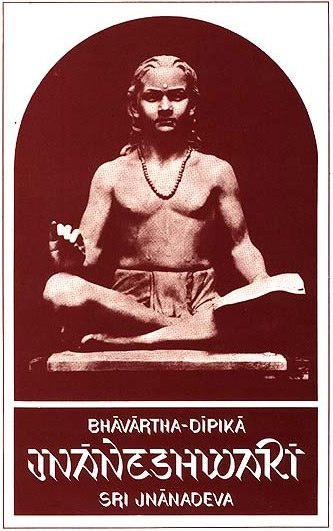Jnaneshwari (Bhavartha Dipika)
by Ramchandra Keshav Bhagwat | 1954 | 284,137 words | ISBN-10: 8185208123 | ISBN-13: 9788185208121
This is verse 5.8-9 of the Jnaneshwari (Bhavartha-Dipika), the English translation of 13th-century Marathi commentary on the Bhagavad-Gita.—The Dnyaneshwari (Jnaneshwari) brings to light the deeper meaning of the Gita which represents the essence of the Vedic Religion. This is verse 8-9 of the chapter called Sannyasa-yoga.
Verse 5.8-9
Verse 5.8: ‘I do not do any action at all:’ so should one intent upon Yoga think-knower of Truth that he is—even when, all the while, he is seeing, hearing, touching, tasting, eating, walking, sleeping, breathing:
Verse 5.9: Talking, ejecting, grasping, opening (eyes) as also closing (them): holding (always) that it is the sense-centres (that are) busied with the sense-objects. (38)
Commentary called Jnaneshwari by Jnaneshwar:
In this way are seen, in a Karmayogi Saint following the path of even-tempered activity, the visible signs of the Perfect Life of the Supreme Invisible Brahman, even before he leaves his body. Usually he could be seen in his body-form and doing all sorts of actions like other persons. The Karmayogin, just as others do, sees with his eyes, hears with his ears,—but the wonder of it is that he does not get entangled into them. He has the touch-sense and he is mindful of smelling. He can talk as suits the occasion. He takes food, avoids prohibited things, and enjoys sound sleep in proper time. He moves as he likes. In this way he performs all the actions. What more, he breathes, he winks, and does all other things but abides forever as one free from action on the strength of his personal pure selfexperience gained as a Karmayogin. For, now with the Sunrise of Pure Knowledge he has awakened out of the slumbers which he had on the bed of ignorance and error that possessed him with the dreamy sense of happiness.
